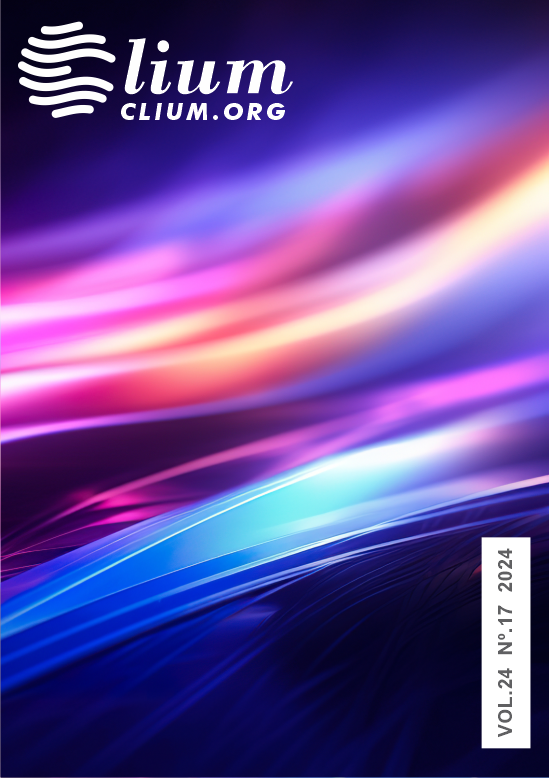Contributions of computing in geosciences: a case study of geometallurgical forecasting
Contribuições da computação em geociências: um estudo de caso de previsão geometalúrgica
Resumo
Geometallurgical modeling has been improved over the years with the incorporation of mineralogical, chemical, and metallurgical information. However, the diversity of the database brings challenges since the information is not unified in procedures, sample support, or quantities. Characteristics such as nonlinearity and nonadditivity of the geometallurgical database impose even more difficulties. The objective of this article is to demonstrate the feasibility of geometallurgical models from multivariate techniques combined with computational tools. The algorithms used in this study were developed in Python programming language. The multivariate analysis and machine learning techniques allowed the grouping of transitional typological domains and the quantification of uncertainty; the selection and reduction of the dimensionality of the heterotopic database; and the prediction of metallurgical behavior from exhaustive primary variables using a transfer function. The results were verified and proved to be satisfactory. Other benefits of the computational structure were: reduction of subjectivity; automation; and dynamic updates of models using new data.
Downloads
Referências
AL KANDARI, N. M.; JOLLIFFE, I. T., 2005. Variable selection and interpretation of correlation principal component. Environmetrics, Published online 28 April 2005 in Wiley InterScience (www.interscience.wiley.com) 16: 659-672 2005.
BRAGA, S. A., COSTA, J. F. C. L., 2016. Krigagem dos indicadores aplicada a modelagem das tipologias de minério fosfatados da mina F4. HOLOS, 1, 394–403. https://doi.org/10.15628/holos.2016.3870.
BROD, J.A., RIBEIRO, C.C., GASPAR, J.C., BROD, T.C., BARBOSA, E.S.R., RIFFEL, B.F., SILVA, J.F., CHABAN, N., FERRARI, A. J. D., 2004. Excursão Geologia e mineralizações dos complexos alcalino-carbonatíticos Congresso Brasileiro de Geologia, XLII, Araxá-MG, pp. 129.
CASTRO, S. A. B. D.; SILVA, A. C., 2024. Evaluation of PCA with variable selection for cluster typological domains. REM-International Engineering Journal, 77(2). https://doi.org/10.1590/0370-44672023770071.
CASTRO, S. A. B., SILVA, E., MATTIOLI, L.; SILVA, A., 2024. Use of the fuzzy algorithm in samples with imprecise descriptions to define typological domains. Concilium, 24. https://doi.org/10.53660/CLM-3723-23P20.
CERVO, V. L.; ANZANELLO, M. J., 2015. Seleção de variáveis para clusterização de bateladas produtivas através de PCA e remapeamento kernel. Production, v. 25, n. 4, p. 826-8332015. https://doi.org/10.1590/0103-6513.14361.
DEMICCO, R. V, KLIR, G. J., 2003. Fuzzy Logic in Geology. Academic Press. An imprint of Elsevier Science. 352P.
DEUTSCH, C. V., 2013. Geostatistical modelling of geometallurgical variables – problems and solutions. In: Proceedings of the International Geometallurgy Conference, Brisbane, Australia, v. 30.
GIBSON, S.A., THOMPSON R.N., DICKIN A.P., LEONARDOS O.H., 1995a. High-Ti and low-Ti mafic potassic magmas: Key to plume-lithosphere interactions and continental flood-basalt genesis. Earth Planet Sci. Lett. 136: 149-165.
JOLLIFFE, I. T. Discarding variables in a principal component analysis - I: artificial data. Journal of the Royal Statistical Society, n. 2, p.160-173, 1972.
LAMBERG, P., 2011. Particles – the bridge between geology and metallurgy. In: Conference in Mineral Engineering, 2011, Luleå. Proceeding, Luleå, p. 1-16.
LISHCHUK, V.; LUND, C.; GHORBANI, Y., 2019. Evaluation and comparison of different machine-learning methods to integrate sparse process data into a spatial model in geometallurgy. Minerals Engineering, 134, 156-165. https://doi.org/10.1016/j.mineng.2019.01.032
LOZANO, C.; BENNET, C., 2003. Geometallurgical modeling applied to production forecasting, plant design and optimisation. Universidad de Chile – Departamento Ingeniería de Minas Taller PROCEMIN, 11p.
MONTGOMERY, D. C.; PECK, E. A.; VINING, G. G., 2012. Introduction to linear regression analysis. [S.l.: s.n.], v. 821. 645 p.
MOREIRA, F. R. D. S., ALMEIDA FILHO, R. D., & CÂMARA, G., 2002. Aplicação da abordagem de Importação Semântica (IS) para caracterização de contatos litológicos em modelos de inferência espacial. Rem: Revista Escola de Minas, 55, 301-306.
NIQUINI, F. G. F.; BRANCHES, A. M. B.; COSTA, J. F. C. L.; MOREIRA, G. D. C.; SCHNEIDER, C. L.; ARAÚJO, F. C. D.; CAPPONI, L. N., 2023. Recursive Feature Elimination and Neural Networks Applied to the Forecast of Mass and Metallurgical Recoveries in A Brazilian Phosphate Mine. Minerals, 13, 748. https:// doi.org/10.3390/min13060748.
OLIEIRA, S. M. B.; IMBERNON, R. A. L., 1998. Weathering alteration and related REE concentration in the Catalão I carbonatite complex, central Brazil. Journal of South American Earth Sciences, 11(4), 379-388.
OROZCO-DEL-CASTILLO, M. G; ORTIZ-ALEMÁN, C.; URRUTIA-FUCUGAUCHI, J.; RODRÍGUEZ-CASTELLANOS, A., 2011. Fuzzy logic and image processing techniques for the interpretation of seismic data. Journal of Geophysics and Engineering, 8(2), 185-194. https://doi.org/10.1088/1742-2132/8/2/006
RIBEIRO, C. C., 2008. Geologia, geometalurgia, controles e gênese dos depósitos de fósforo, terras raras e titânio do complexo carbonatítico Catalão I, GO. 508 f. Tese de doutorado em Geologia-Universidade de Brasília, Brasília
SCHOLKOPF, B; SMOLA, A. J., 2002. Learning With Kernels: Support Vector Machines Regularization Optimization and Beyond, Cambridge, MA, USA: MIT Press.
WILLIAMS, S. R. E RICHARDSON, J. M., 2004. Geometallurgical Mapping: A New Approach That Reduces Technical Risk. Proceedings 36th Annual Meeting of the Canadian Mineral Processors, Paper 16, 28p.



